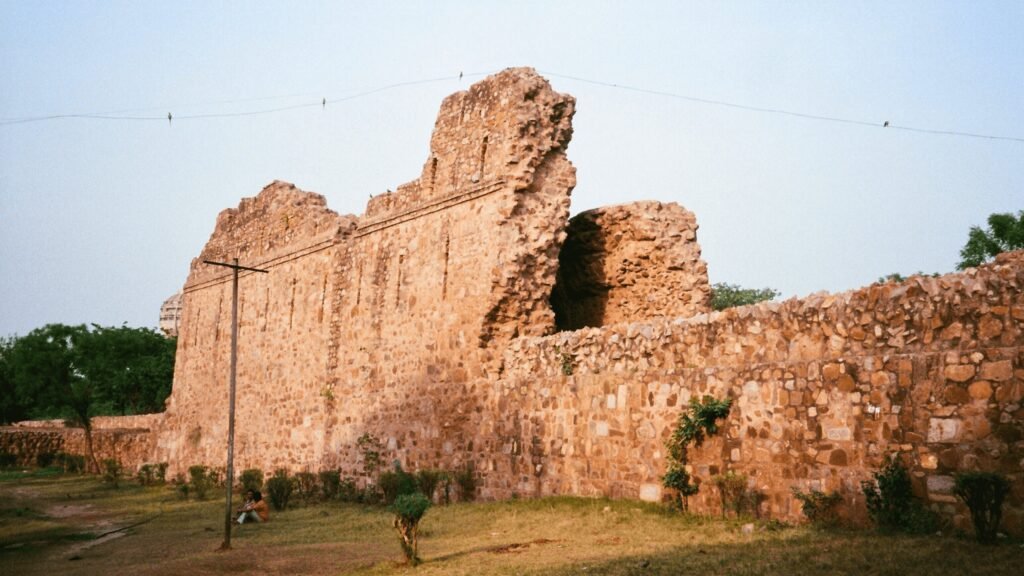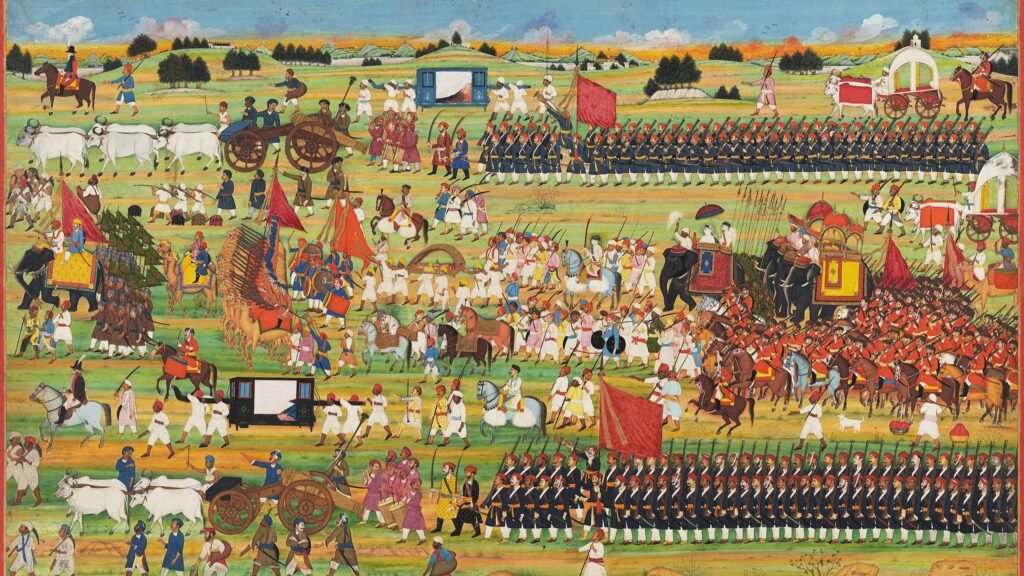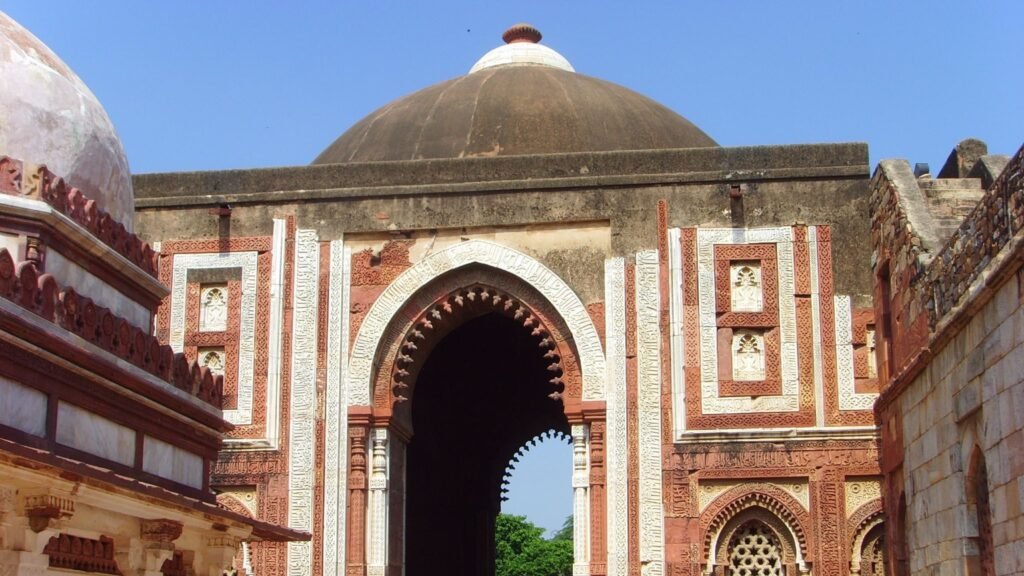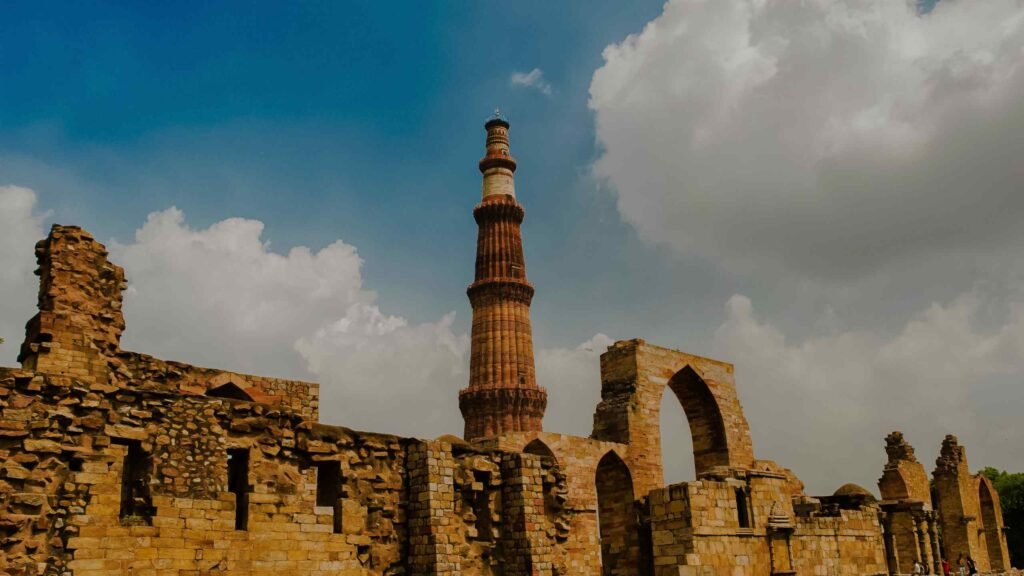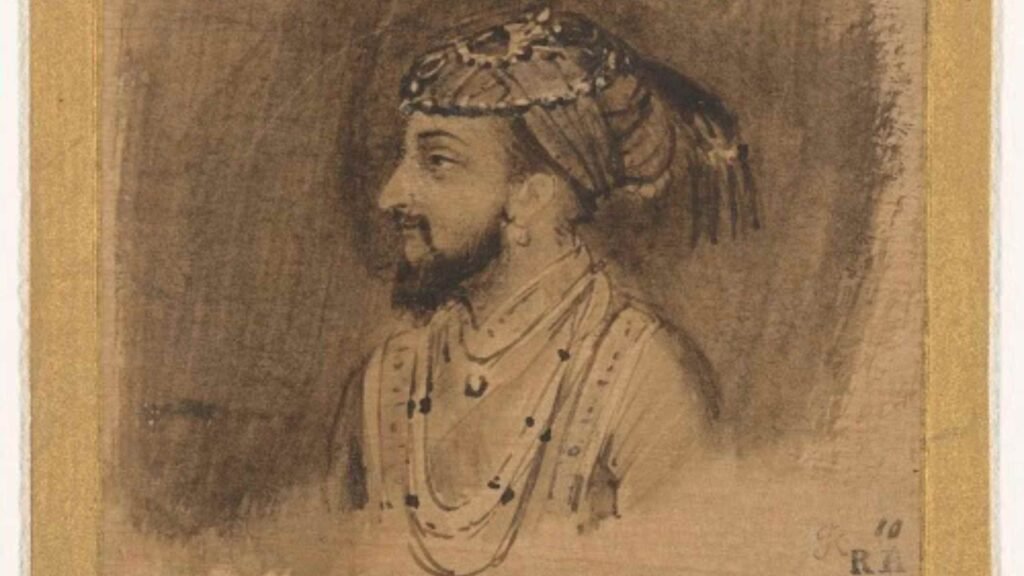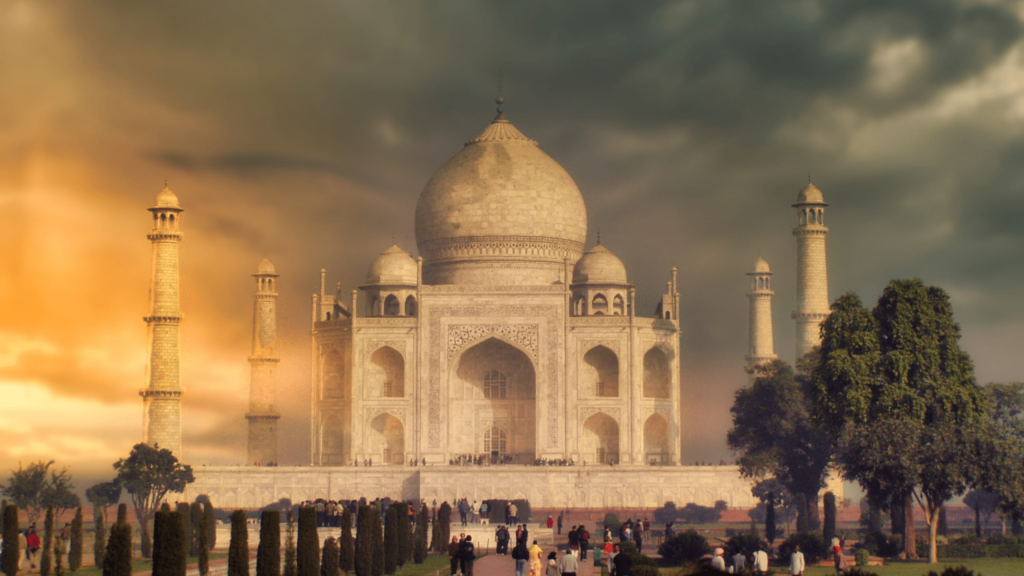1. Taj Mahal video – By Videvo, http://www.videvo.net
2. Taj Mahal images – By Hritik Sirsat (@_wander_frame31), By Arjun Singh (@bahramjiphotography), By Kevin Samson (@_awaken_soul_), By Monjil (@_monjil_), By Akash Pratap Singh (@sanskaari_kalakaar)
3. Shah Jahan seated on a minor throne – By Govardhan(?), Public Domain, https://commons.wikimedia.org/w/index.php?curid=19251183
4. Shah Jahan – Gift of J. H. Wade, https://www.clevelandart.org/art/1920.1969
5. Taj Mahal – By https://www.pxfuel.com/en/free-photo-xwgxc
6. Red Fort – By Mahesh Bhanupanth – Own work, CC BY-SA 3.0, https://commons.wikimedia.org/w/index.php?curid=21117221
7. Jama Masjid – By Bikashrd – Own work, CC BY-SA 4.0, https://commons.wikimedia.org/w/index.php?curid=51210343
8. Jahangir being served by his two sons Khusrau and Parviz – By Manohar – https://www.britishmuseum.org/collection/object/W_1920-0917-0-2, Public Domain, https://commons.wikimedia.org/w/index.php?curid=4171513
9. Khusrau is captured and presented to Jahangir – By Unknown author – http://warfare.tk/Moghul/17thC/Moghul_17thC.htm, Public Domain, https://commons.wikimedia.org/w/index.php?curid=22568174
10. Shahryar – By Indian School of the 17th century (AD) (Mughal) – The Walters Art Museum, Public Domain, https://commons.wikimedia.org/w/index.php?curid=19125990
11. Battle between Mongols & Chinese – By Sayf al-Vâhidî. Hérât. Afghanistan – Bibliothèque nationale de France. Département des Manuscrits. Division orientale. Supplément persan 1113, fol. 49, Public Domain, https://commons.wikimedia.org/w/index.php?curid=10010647
12. Dara Shikoh with his army – By Unknown author – http://warfare.tk/Moghul/17thC/Moghul_17thC.htm, Public Domain, https://commons.wikimedia.org/w/index.php?curid=22568151
13. Shah Jahan – Gift in honor of Madeline Neves Clapp; Gift of Mrs. Henry White Cannon by exchange; Bequest of Louise T. Cooper; Leonard C. Hanna Jr. Fund; From the Catherine and Ralph Benkaim Collection, https://www.clevelandart.org/art/2013.328
14. Shah Jahan accepts a falcon from Dara Shikoh – Edwin Binney 3rd Collection, https://www.flickr.com/photos/thesandiegomuseumofartcollection/6125040002
15. Aurangzeb – By Unknown author – Four miscellaneous miniatures of Mughal emperors and an unidentified ruler., CC BY-SA 3.0, https://commons.wikimedia.org/w/index.php?curid=24528912
16. The Battle of Samugarh – By Payag – http://www.harvardartmuseums.org/art/216542, Public Domain, https://commons.wikimedia.org/w/index.php?curid=22271968
17. The Passing of Shah Jahan – By https://wellcomeimages.org/indexplus/obf_images/25/d1/9974fb1b91df5b66bc1b6d9ee82f.jpg Gallery: https://wellcomeimages.org/indexplus/image/V0046338.html, CC BY 4.0, https://commons.wikimedia.org/w/index.php?curid=36662589
18. Tombs of Mumtaz Mahal and Shah Jahan – By The original uploader was Donelson at English Wikipedia. – Transferred from en.wikipedia to Commons by quickiebites., CC BY-SA 3.0, https://commons.wikimedia.org/w/index.php?curid=4028131
19. Aurangzeb – By Nicolas de Larmessin – This file comes from Gallica Digital Library and is available under the digital ID btv1b84543563, Public Domain, https://commons.wikimedia.org/w/index.php?curid=84601409
20. A blindfolded suitor is brought before a princess – By Fayzullah – https://clevelandart.org/art/2013.343.a, CC0, https://commons.wikimedia.org/w/index.php?curid=76144724
21. Last Mughal Emperor Bahadur Shah Zafar – By Unknown author – 1 2, Public Domain, https://commons.wikimedia.org/w/index.php?curid=37223925
22. Ashoka’s visit to the Ramagrama stupa – By Photo Dharma from Sadao, Thailand – Detail of:., CC BY 2.0, https://commons.wikimedia.org/w/index.php?curid=61783990
23. Group portrait of Mughal rulers – By Khalili Collections / CC-BY-SA 3.0 IGO, CC BY-SA 3.0 igo, https://commons.wikimedia.org/w/index.php?curid=107979757

